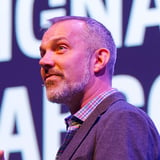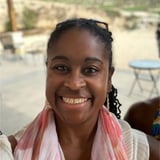Summary
Ever heard that accessibility research is too expensive? Too time-consuming? Or that you need a massive sample size to see real insights? These misconceptions stop too many UX researchers from taking the first step toward inclusive design. But here’s the truth: accessibility research is often simpler, faster, and more impactful than you think. In this interactive session, Samuel Proulx, Accessibility Evangelist at Fable, will demonstrate the actual reality behind the biggest myths that hold teams back, through a hands-on look at what accessibility research actually looks like. You’ll experience a real research interview with an assistive technology user and gain practical insights into how Fable’s UX researchers prepare for and conduct accessibility studies. By the end of this session, you’ll see that getting started doesn’t require a huge budget, complex logistics, or a massive sample size, just the willingness to take the first step. Join us to demystify accessibility research and leave empowered to integrate it into your own work.
Key Insights
-
•
Heading structure is critical for screen reader users to orient themselves, as headings act like a table of contents.
-
•
Screen reader users rely heavily on detailed alt text and product descriptions to understand items, especially for complex products like spices.
-
•
Hover menus are often inaccessible because keyboard and screen reader users cannot reveal submenu items that appear only on mouse hover.
-
•
Effective accessibility research requires participants who talk aloud and verbalize their screen reader interactions to provide clear feedback.
-
•
Researchers need training to avoid interrupting or overlapping with screen reader voices during live sessions.
-
•
There must be flexibility in research sessions to respond to participant distress or usability roadblocks instead of rigidly following scripts.
-
•
A robotic, high-speed screen reader voice is preferred by blind users for faster content consumption compared to natural-sounding voices.
-
•
Fable offers a subscription-based platform that streamlines recruiting screen reader users for ongoing accessibility research with quick turnaround.
-
•
Verbal confirmations from researchers during sessions validate participant input without disrupting their navigation or flow.
-
•
Building rapport and a relaxed atmosphere helps ease participants’ frustrations and encourages honest, valuable feedback.
Notable Quotes
"I kind of use headings to get an overview of what's on a page, like a table of contents."
"When I pressed enter it said product added to cart, but I had to check if it was actually the right product."
"Ideally it should say about collapsed and then you press enter and it says expanded, so you know more options are available."
"I use a very robotic kind of unnatural sounding voice because I want to listen as fast as possible for efficiency."
"Participants who do this kind of research are happy to answer questions about how they use assistive technology."
"You have to avoid speaking when the screen reader is speaking, which takes some training to get used to."
"If distress does happen in sessions, it’s easier to talk through it using humor or a personable approach."
"Hover menus reveal options on mouse hover, which isn't accessible to keyboard or screen reader users."
"Not every task has to be completed; if a participant can’t find a way, that means the experience can be improved."
"Ongoing accessibility research is essential because the product is always changing, and new things always need testing."
Or choose a question:
















More Videos

"Different ops functions have different incentives; aligning those incentives could make leaps and bounds in collaboration."
Jon Fukuda Jake Burghardt Jose Coronado Natalie Dunbar Denise TillesAll the Ops: Successful cross-functional collaboration
September 10, 2025

"How do they grow and organize their teams to keep up? How do they scale their processes? How do they maximize efficiency and quality?"
Jemma AhmedTheme 2 Intro
January 8, 2024

"We want to keep people at the center of our work to create inspired solutions that make the world better."
Kit UngerTheme 2: Introduction
June 10, 2021

"The roles of who is designing continue to shift—community designing for community, designing with community, and community members becoming consultants."
Ariel KennanTheme Two Intro
November 17, 2022

"Async communications helped us reduce emails and meetings, improving overall efficiency."
Amy EvansHow to Create Change
September 25, 2024

"This poor young airman is not entering into a super cool sci-fi command center but using apps built by their grandparents."
Michal Anne RogondinoSaving Outer Space: The First UX Design System for Our Nation’s Satellites
January 8, 2024

"Crabs grow by shedding their shells, which is uncomfortable but necessary."
Dean BroadleyNot Black Enough to be White
January 8, 2024

"What is your mission for this design Ops summit? When this conference ends, what do you want to feel?"
Louis Rosenfeld Bria AlexanderDay 1 Welcome
September 23, 2024

"Transformation is new ways of thinking and eventually doing; we won’t have all the answers at the start and that’s okay."
Sarah Kinkade Mariana Ortiz-ReyesDesign Management Models in the Face of Transformation
June 8, 2022

















